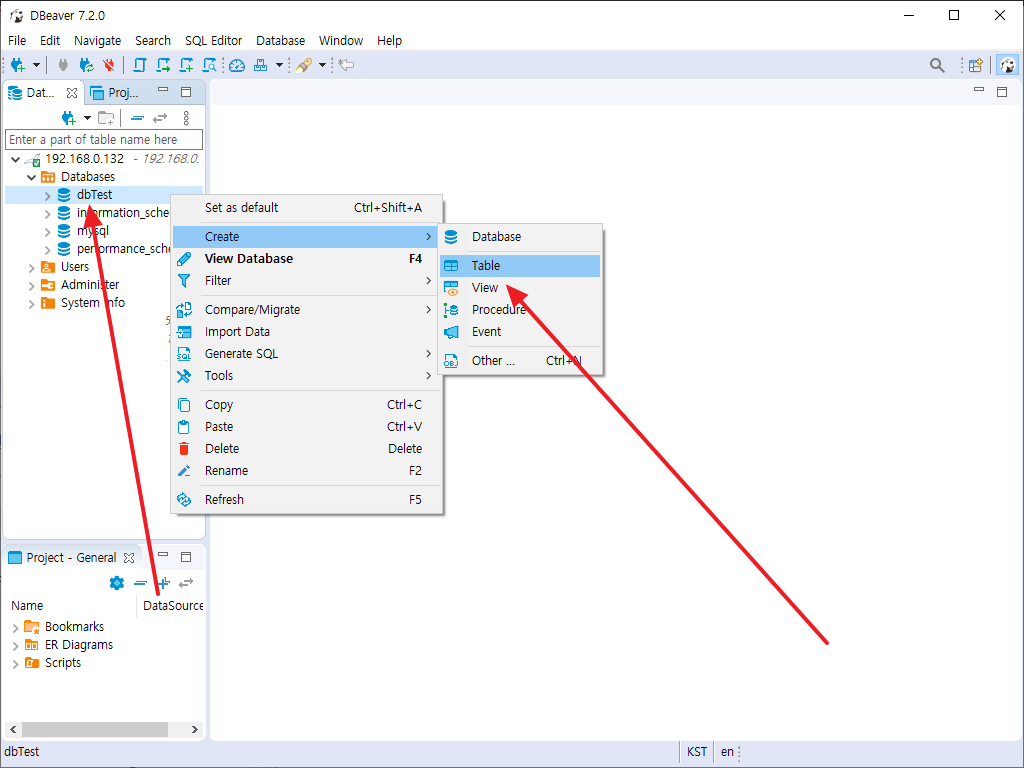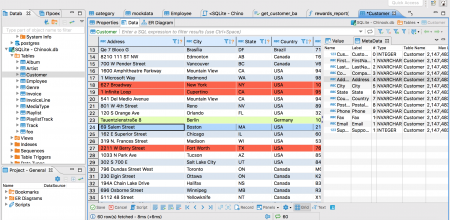Dbeaver Mariadb
DBeaver Community is a free, open source universal database manager that gets the job done! It is a tool tool for developers, SQL programmers, database administrators and analysts and supports all popular databases in use today. From MySQL, PostgreSQL, MariaDB, SQLite, Oracle, DB2, SQL Server, Sybase, MS Access, Teradata, Firebird, Derby and many others.
- Dbeaver Mariadb Connection Refused
- Dbeaver Mariadb Access Denied
- Dbeaver Mariadb Create Table
- Dbeaver Mariadb 5
Using DBeaver, I'm trying to connect to my AWS ec2 instance where I've installed a MariaDB database. I've created a new connection as: Connection: AWS / Maria DB Server Host: localhost (because. MariaDB Server is one of the most popular open source relational databases. It’s made by the original developers of MySQL and guaranteed to stay open source. It is part of most cloud offerings and the default in most Linux distributions. Here is a quick outline of how to configure DBeaver to connect to denodo using JDBC and a few references with other helpful information. Copy jdbc driver from denodo to dbeaver Copy from denodo eng.
If you’re looking for a database tool with health monitoring, SQL editor with various extensions (plugins), then DBeaver is a great tool for you. There are plugins and extensions for all the databases mentioned above and any others that supports JDBC driver.
This brief tutorial shows students and new users how to install DBeaver Community database tool on Ubuntu 16.04 / 16.04 LTS.When you’re ready to install DBeaver Community, follow the steps below:
Step 1: Install OpenJDK 8
DBeaver works with Java. You must have JAVA installed on Ubuntu prior to installing DBeaver. For this tutorial, we’re going to be installing the open source version of Oracle JAVA. To install, run the commands below:
After running the commands above, run the commands below to test if Java is installed…
java -version
You should get similar print as below:
Continue below to installing DBeaver
Step 2: Install DBeaver Community
Now that DBeaver Community is installed, run the commands below to add DBeaver official repository to Ubuntu…
After that, run the commands below to install DBeaver
If you want to use MariaDB, use the steps below to install and configure…
Step 3: Install MariaDB Database Server
MariaDB database server is a great place to start when looking at open source database servers to use with DBeaver… To install MariaDB run the commands below…
sudo apt-get install mariadb-server mariadb-client
After installing MariaDB, the commands below can be used to stop, start and enable MariaDB service to always start up when the server boots.
Run these on Ubuntu 16.04 LTS
Run these on Ubuntu 18.04 and 18.10 LTS
After that, run the commands below to secure MariaDB server by creating a root password and disallowing remote root access.
sudo mysql_secure_installation

When prompted, answer the questions below by following the guide.
- Enter current password for root (enter for none): Just press the Enter
- Set root password? [Y/n]: Y
- New password: Enter password
- Re-enter new password: Repeat password
- Remove anonymous users? [Y/n]: Y
- Disallow root login remotely? [Y/n]: Y
- Remove test database and access to it? [Y/n]: Y
- Reload privilege tables now? [Y/n]: Y
Restart MariaDB server
To test if MariaDB is installed, type the commands below to logon to MariaDB server
sudo mysql -u root -p
Then type the password you created above to sign on… if successful, you should see MariaDB welcome message
That should install it…

Now you can navigate to Ubuntu Activities overview, then search and launch DBeaver Community… When it opens, attempt to connect to your Database of choice…
Select the database server you want to connect to from the list and attempt to connect…
Connect to MySQL database using the root account.
When you attempt to logon using MariaDB root account it will fail… That’s because MariaDB and MySQL have switch their authentication method to auth_socket
The auth_socket plugin authenticates users that connect from the localhost through the Unix socket file… which prevents users from connecting with password… So, you won’t be able to connect via the root account…
When you attempt to logon, you see the error “#1698 – Access denied for user ‘root’@’localhost’”
To fix that, run the commands below:
sudo mysql -u root Pto meeting tonight!teach to be happy.
That should get you into the database server. After that, run the commands below to disable plugin authentication for the root user
Restart and run the commands below to set a new password.
sudo systemctl restart mariadb.service
Now try again to logon… this time it should work!
Congratulations! You have successfully installed DBeaver Community on Ubuntu…
You may also like the post below:
DBeaver is an awesome SQL client and database management tool.
Dbeaver Mariadb Connection Refused
It comes with drivers for the most popular databases, including MySQL, PostgreSQL, SQLite and many others, meaning you can learn one tool and use it across projects built on different technology stacks. How awesome is that?
Bellow are the steps you can use to connect your DBeaver client to a remote database server via SSH.
Note that you only need to do these steps once. The connection configurations will be saved and you can re-use them by right-click + connect.

This guide is created using DBeaver version 6.3.
Method 1: DBeaver via SSH with plain password
1. Create a new connection
Create a new connection by right clicking in your Database Navigator area.
2. Fill SSH details
Fill details under the SSH tab, and click Test tunnel configuration.
You should see a success message if the details were correct.
Dbeaver Mariadb Access Denied
3. Fill database’s details
Dbeaver Mariadb Create Table
Now that DBeaver can connect via SSH, let’s go back to the General tab and fill in the database credentials:
Clicking Test Connection, you should see a success message. Click Finish.
Method 2: DBeaver with encrypted openssh private key file
If your server requires an openssh private key to login, follow the bellow steps:
1. Add SSHJ to DBeaver
You can do it by opening Help/Install New Software… and typing the following link: https://dbeaver.io/update/sshj/latest/
2. Connect
Use the same steps as Method 1, but adjust as follows:
- On the SSH details menu (step 2), provide the password for your encrypted private key file.
Select SSHJ, under Implementation.
- Change Authentication Method to Public Key.
Select your Private Key Papasgaming potatoes.
- Click Test tunnel configuration and Finish.
Resources
Dbeaver Mariadb 5
If you need additional help, this link may be very useful.
